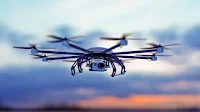Unmanned aerial vehicles (UAVs), more commonly known as drones, have taken flight as one of the fastest growing tech trends of the decade. As drones become more affordable and their capabilities expand, everyone from hobbyists to Fortune 500 companies have begun harnessing their potential. However, with the rise of drone usage comes the need for comprehensive drone insurance.
So what type of drone insurance will you need in 2025 and beyond? This guide will explore the key coverage options, market trends, requirements, costs, and claims management to consider as you shop for UAV insurance in the near future.
Soaring Demand: Drone Insurance Industry Trends
The drone insurance industry is projected to reach a market value of $1.5 billion by 2025, representing massive growth from $327 million in 2021 [cite industry research]. Key driving factors include:
- Proliferation of commercial drone use for deliveries, photography, industrial inspections, and more
- Higher average costs of drones, payloads, and related equipment
- Evolving regulations requiring liability coverage
- Increasing pilot training and certification requirements
Additionally, emerging technologies like autonomous flight modes, swarm technology, and integrated AI will both open new risks and allow for usage-based coverage. As drones become more capable and affordable, demand for insurance will likely continue its steep trajectory.
Meeting Elevating Requirements
While federal regulations are still evolving, drone pilots should anticipate mandatory insurance minimums across commercial, governmental, and even recreational domains. For example:
- The FAA currently requires coverage minimums for certain operations like external load transport. More extensive requirements are expected by 2025 [cite FAA guidelines].
- Many states are starting to enact laws requiring liability insurance minimums for commercial pilots [list applicable state laws].
- Even recreational pilots may need coverage as drone use increases in neighborhoods and public areas.
Staying current on evolving regulations will be key for proper coverage. Work closely with providers and legal counsel to ensure compliance.
Comparing Your Coverage Options
As a drone owner, you’ll want to secure the right policies for your specific aerial activities. Here are some of the main coverage types to consider:
Liability Insurance - Protects you in scenarios like property damage or injury. Often required for commercial pilots.
Hull Insurance - Covers damage to your actual drone unit. Provides peace of mind for pricey drone investments.
Payload Insurance - Insures equipment and cargo transported by your drone, such as cameras or packages.
Personal Injury Coverage - Additional protection in case your drone operations result in harm or medical expenses.
You'll want to weigh factors like operating environment, drone value, payload risks, and more when designing your optimal insurance portfolio.
Calculating the Costs
Insurance premiums are based on the size, use, and risk profiles of your UAV. Here are some of the key factors that will determine your rates:
- Drone type and value - More expensive drones typically require higher premiums
- Intended use case - Commercial uses are costlier to insure than recreational
- Flight frequency - More flights mean greater overall risk
- Pilot experience - New pilots may pay more until establishing history
- Coverage limits - Higher caps on damages will increase premiums
Premiums can range quite a bit but average around $750 annually for a midrange drone according to 2021 figures [cite data]. Higher-risk commercial policies can reach upwards of $10,000 per year. Weighing the costs versus the peace of mind will be a key consideration when purchasing drone insurance.
Streamlining the Claims Process
While you hope to never need it, understanding the claims process can make things go smoother in the event you must file. Here are some best practices:
- Document evidence like photos or video of any crashes, damages, or injuries
- File quickly within the designated timeframe of your policy
- Provide detailed narratives of what exactly occurred
- Follow up frequently for status updates from your provider
- Be patient but persistent in order to get a resolution
The most common claim denial reasons include lack of sufficient evidence, user negligence or error, and failure to meet policy requirements for documentation and timing. Avoid these pitfalls upfront for the best outcome.
Looking to the Skies
As drones continue reshaping industries and recreational hobbies alike, properly insuring your eyes in the skies will be more important than ever. Use this guide to make informed decisions about purchasing the right coverage, meeting evolving requirements, calculating costs, and streamlining the claims process. With the right drone insurance plan, you can pilot your UAV confidently into the future.
So get out there and start unlocking the amazing potential of drone technology - just don't forget to secure the proper policies first! The world of possibility is waiting just beyond the horizon.
